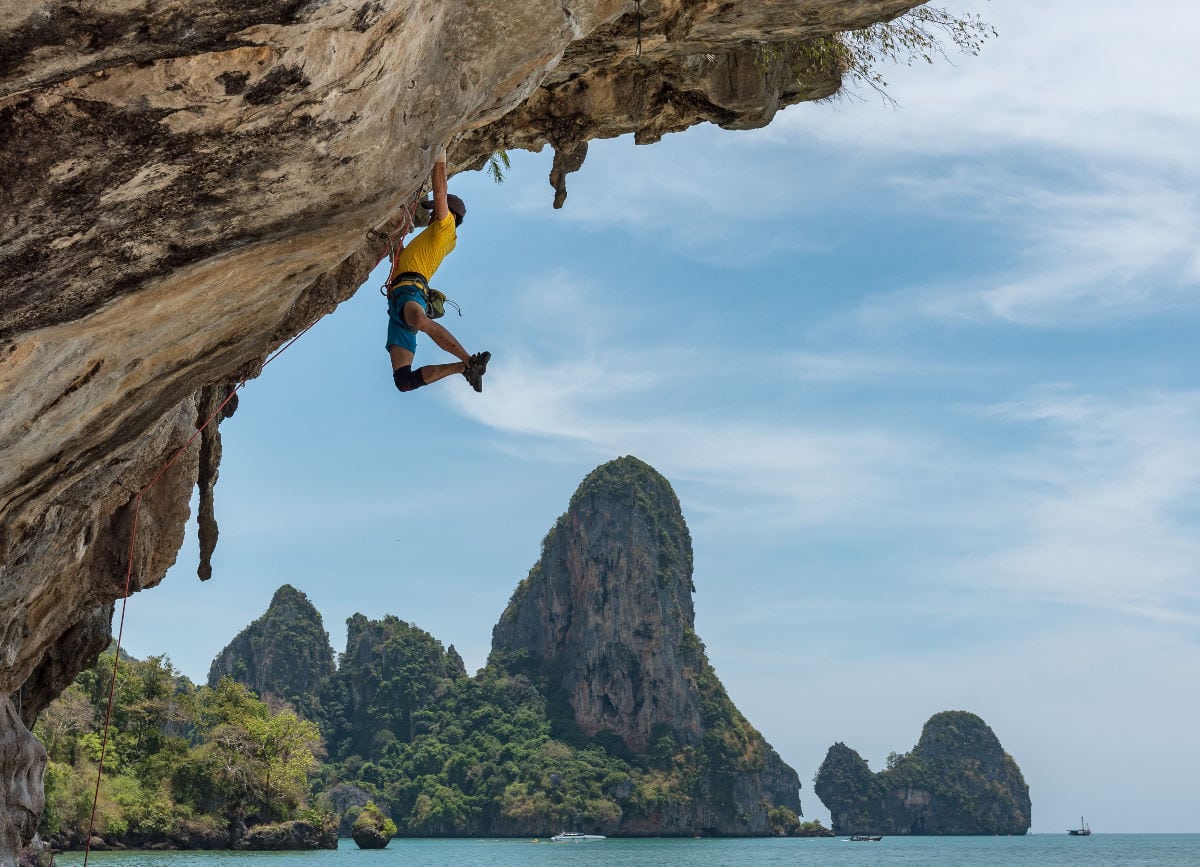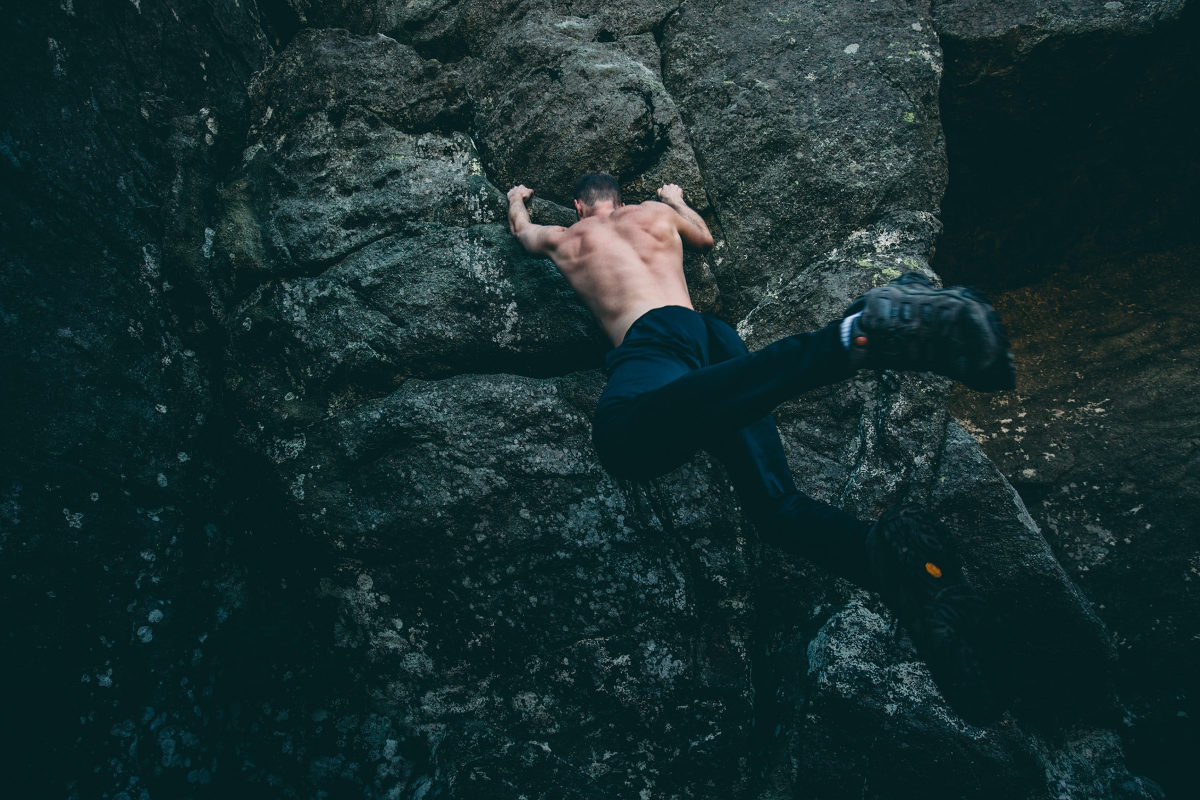What is Psicobloc
This sport was born, as well as hydrospeed, in the 70s in our island, Mallorca, but it was not until 2002 that it began to become fashionable, attracting the attention of athletes from all over the world. It was born thanks to Miquel Riera (deceased at the age of 56 on October 9 of this year), one of the worldwide pioneers and publisher of several books about where to practice this sport, how to access the areas and what level the cliffs are.
As Miguel Riera said, to be considered Psicobloc the wall must have a “psycho” component and for this it must exceed 15m in hight. This type of climbing, is characterised by its hight and by being on the water. It is the modality that allows more freedom of movement and at the same time is the coolest and offers fun experience. In addition, a feeling of lightness is added because you don’t have to be loaded with ribbons, pots or harnesses.
It consists of climbing on the water and without rope. The sea, pool, swamp, lake … are the only protection against the fall. You have to be careful because the routes are long, very high and sharp, and the higher you are the more danger there is of falling because of tiredness.
The competitions of this sport are increasingly popular, result of the great boom that this modality is having because it is cooler in the summer months.

Necessary equipment.
- Climbing shoes. It is better if they are well used, because with sea water and the sun they will keep rigid. At the end of the practice they should be rinsed with fresh water and laid out to dry in the shade.
- Swimsuits. Climbing without a swimsuit is not recommended because falling from a certain height can do a lot of damage to soft tissue.
- Magnesium. It is used so that the hands do not slip. There are those who make or buy plastic magnesium or similar because it repels the water. This way it will dry quickly in use. You can carry it in the bottom of a plastic bottle with a pair of holes to pass the belt and hang it on the waist. However, liquid magnesium is also common, the good thing about it is that it does not get wet but on long tracks it will not stick as well towards the end.
- Buoy. Apart from the three previous items, the buoy is very useful to reach certain sectors because it floats.
Climbing tips for Psicobloc
As in our post about aquathlon, we are going to offer some advice on how to prepare your first experience with the psicobloc
One of the fundamental requirements is, without a doubt, to know how to <strong>swim well </strong>. It is not the same to swim on cliffs where the sea is rough than in a pool or calm waters. Therefore one of the tips is to add swimming in your training to gain such ease.
Many climbers prefer to warm-up barefoot so they have dry climbing shoes for the ‘good climb’. In addition you have to be careful with this type of rocks as sea erosion makes them sharper. With the humidity of the environment and the quality of the rocks, it is important to take special care of your hands skin.
The best walls to practice the sport have a negative angle, to make sure that if you fall it is in the water without touching the rock. The cliffs of Mallorca are the best to practice. In fact, the best place in Mallorca to start this sport is Cala Varques, for the atmosphere, with climbers from all over the world sharing everything. Es Pontàs is very spectacular but it is for practitioners who have a professional level.

Prevention
The keys to specific Psicobloc training is to practice the falls. The fact that it is the water that slows your fall sounds good, but it is not as simple as that when you are climbing a cliff over the sea, seeing that the waves break violently against the rocks and you do not have a rope to hold on to. Also when you fall, get out of the area under the wall as quickly as possible, to avoid the risk of other climbers falling onto you.
Be careful with jellyfish, which are usually in hot waters. It is advisable to bring ointment for bites.
The first few times you exceed 10 meters in hight, it is very scary, so you have to be very careful while climbing each meter and you have to keep an eye on the tracks and the steps to come.
The Psicobloc requires a lot of common sense, you are in the hands of nature, so if the conditions are not ideal for practicing the sport, turn around.
Another tip is to never go alone, because no matter how expert you consider yourself, you never know what can happen, nature is unpredictable. Moreover, it is better that you go with people who know the area, and if you cannot then informed yourself as well as you can.
You also have to know where you will get out of the water. You might need to step hard to climb or use a fixed rope through more accessible rocks or use a boat.
Finally we have to emphasise that the sea is variable, and low tide can be dangerous because it decreases the depth of some areas.
Training for Psicobloc
The climber should try to enter the water in a controlled manner: vertical with the arms up or glued to the body and legs together. To get into position, shake your legs and arms strongly while you fall and when you are approaching the water stiffen up like a log.
Practicing the jump in cliffs of great heights will be beneficial to develop self-control to be more relaxed. This will lead to more fluid climbing and an optimal use of energy.
Once you know everything there is to know to practice this sport, I dare you to try it! The great atmosphere and the feeling of freedom … will hook you!





